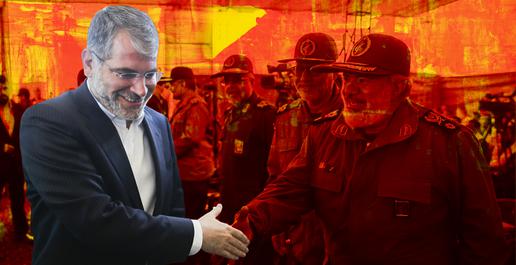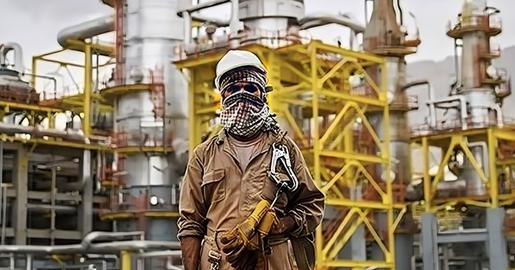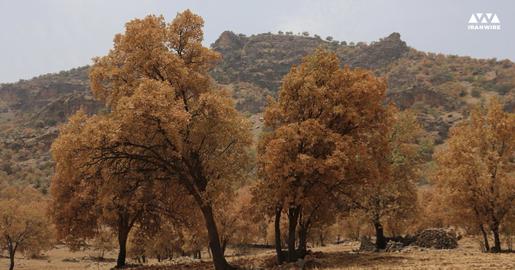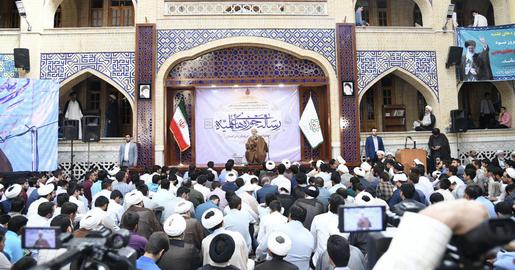An incident in western Iran has once again brought attention to the persistent danger of unexploded ordnance (UXO) leftover from the Iran-Iraq war.
Hadi Ghonchhedoost, a resident of Zel village in Baneh city, lost his life due to the explosion of war remnants last week.
Despite more than three decades having passed since the end of the Iran-Iraq war, the Islamic Republic has yet to fully clear these hazardous remnants from its western border areas.
The incident contradicts frequent claims by government media that over 90 per cent of mine-contaminated areas have been cleared.
Evidence and testimonies from citizens in the western provinces and border regions paint a different picture, suggesting that significant dangers still lurk beneath the soil.
Experts estimate that millions of landmines and UXOs remain scattered across Iran's western provinces, including Kurdistan, Kermanshah, Ilam, and Khuzestan.
These explosive remnants of war continue to pose a severe threat to local populations, particularly in rural areas where agriculture and herding are common occupations.
Yahya Sorkhani, an environmental activist, addressed the issue during a live Instagram broadcast.
Sorkhani highlighted that five provinces— Ilam, Khuzestan, West Azerbaijan, Kurdistan, and Kermanshah—continue to grapple with extensive minefields along their borders with Iraq and the Kurdistan region.
"Despite government claims, most mine-contaminated areas in Iran remain uncleared," Sorkhani said.
"Over time, due to snow, rain, and flooding, mines have sometimes shifted from former military locations into agricultural lands, villages, and residential areas," he added.
Sorkhani further revealed that approximately 4 million hectares across these five provinces are contaminated with mines.
He specifically noted that of the 230-kilometer border between Iraq and Kurdistan province, 136 kilometers remain mine-infested.
"The negligence of the Islamic Republic on this issue continues to put the lives and health of many people in this region at risk every year," Sorkhani concluded.
Landmine Victims in Iran's Border Regions
Sorkhani highlights that the primary victims of landmines in Iran are children, along with women, peasants, farmers, and local shepherds.
These individuals often encounter landmines not just in former military zones but also in their everyday environments like pastures, forests, and villages.
Additionally, kolbars in the western provinces are frequently injured or killed by landmine explosions as they navigate these perilous border areas.
Sorkhani also notes that the Islamic Republic's security strategies for the borders and western provinces have not only neglected mine clearance but have also involved the re-planting of landmines.
Local witnesses have reported seeing IRGC forces planting landmines at borders such as those near Baneh and Piranshahr.
Weak Training and Awareness About Mine Exposure in IranThe issue of landmines is a global concern, necessitating education for citizens living in mine-contaminated areas.
However, in Iran, civil institutions aiming to educate and assist these communities face significant obstacles from security institutions.
Sorkhani highlights the challenges faced by civil organizations like "Iran Without Mines."
Despite their efforts to provide relief and education to mine victims and residents of contaminated areas, these groups are often harassed by security agencies.
The Iranian government, through its defense ministry, has monopolized activities related to mine training and neutralization, citing the need for specialized personnel.
While there is a valid argument for involving specialized teams in mine clearance, Sorkhani argues that civil society could play a crucial role in conducting training classes and providing relief.
Ineffective Laws Disrupt Lives of Landmine Victims in Iran
The laws in Iran that pertain to victims of landmines and leftover war munitions are largely ineffective, despite stipulating that those injured or killed by explosives such as grenades, mines, or cannonballs in war zones are to be considered "veterans" or "martyrs."
These terms are used to recognize the wounded and the dead of war, yet evidence suggests that the implementation of these laws is minimal.
Landmine victims have repeatedly voiced their frustrations, indicating that the law is rarely applied as intended.
Yahya Sorkhani points out that neither children nor adults affected by landmines receive adequate financial, medical, educational, or psychological support from the government.
The only existing framework is Commission No. 2, which includes representatives from military and security agencies and the Martyrs and Veterans Foundation but excludes any representation from the victims themselves.
This commission evaluates evidence from the victims, and proving that a mine explosion was unintentional can be particularly challenging for many plaintiffs.
If Commission No. 2 recognizes a victim as a veteran, the Martyr Foundation provides a pension. If not, other organizations like the relief or welfare committees may offer support. For children recognized as veterans, they are eligible for a pension starting at age 18.
One poignant example shared by a user highlights the law's inefficacy. Two years ago, this user's uncle lost his leg due to a mine explosion in Baneh.
Despite extensive efforts, he failed to receive government medical services. He was even questioned about the explosion's authenticity, casting doubt on his claim.
The strict regulations, lack of identified mined areas, mine displacement due to natural factors like rain, and the planting of new mines continue to disrupt life in contaminated regions.





























comments